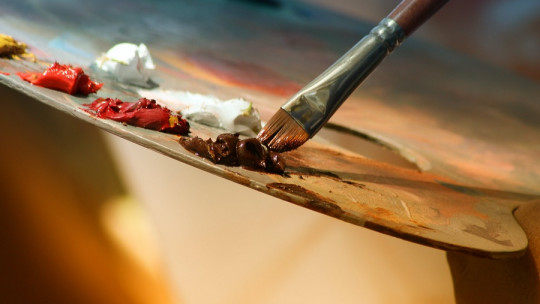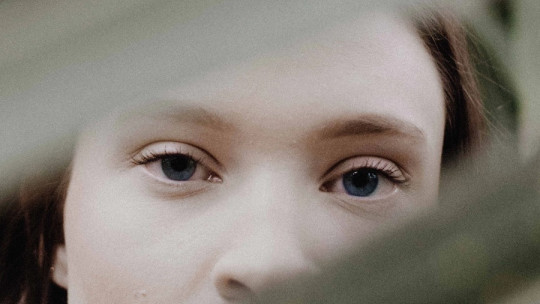The main objective of therapy is to help overcome the state of paralysis, and rebuild the individual’s available resources. In this sense, Creativity is an integral and characteristic property of human beings due to the predisposition to generate the unprecedented.
Thus, creativity is a resource in psychotherapy that is not limited to the area of the arts, but refers to the expression of key behaviors that differentiate human beings.
Trauma is an obstacle to the imagination
Trauma appears when the subjective experience reaches such intensity that it produces an inadmissible experience, or requires processing capabilities not available to the subject.
Among other consequences, trauma appears to block the creative and generative expression of one’s own development. Trauma can be hidden in plain sight, and appear in non-verbal and unforeseen ways, which therapists must observe in the person’s response to determine whether or not the experience has been integrated. Integration affects all levels, and takes place when the left and right brain hemispheres communicate and establish parallels between thoughts and somatic sensations.
In his gestalt theory, Daniel Stern proposed the dynamic called the form of vitality. With these forms he refers to basic dimensions that can assume a creative characterization, since imbalance is a sign of vitality, something necessary to grow and develop. Vitality favors many active and present forms in daily life, in psychological development and in numerous artistic expressions.
The use of creativity in psychotherapy can be the basis for the reworking of trauma through recognizing the not yet activated resources available to the individual. Creativity arises from the integration of our left hemisphere with the right hemisphere; Creativity integrates opposite aspects of our mind, and as a result the mind leans towards vitality, flexibility and resilience.
The ability to imagine
One of the most significant differentiating abilities of humans is imagination. During psychotherapy, guidance through the traumatic experience is done through the stimulation of the patient’s imagination. A dialogue is established between experiences and imagination. Thus, psychologists can use the therapeutic creative process to release and encourage creativity in the patient during the therapeutic course.
Positive emotions and creativity
Emotions, even negative ones, play an adaptive function in humans. An emotion constitutes a temporary affective response that predisposes one to perform an action conclusive to it. Positive emotions can be defined as those that have adaptive functions because they facilitate the effectiveness of responses to the stimuli that are presented, and promote growth and well-being.
Positive emotions modify the way information is processed, facilitating creativity. This explains why People in a positive mood are able to evaluate a situation more broadly and positively, and make decisions that are more beneficial to their well-being.
Positive emotions have an influence on cognitive processes and cognitive flexibility, which, as has been seen, is essential for problem solving. “Cognitive flexibility” can be defined as the ability to adapt to different requirements or changes (Isen, 2002) that, through plasticity, build new neural networks.
Problem resolution
Taking into account the relationship between positive emotions and problem resolution, we can obtain a method with which the therapist can help the patient achieve the desired change by promoting creativity and cognitive flexibility in the search for new solutions give new meanings to their contexts and improve their quality of life and sense of happiness.
Positive emotions increase interest and curiosity, allowing greater flexibility to think about how to improve life in the future, including new ideas that might otherwise have been dismissed.
Nevertheless, you should avoid overvaluing positive emotions , since they can lose their meaning-organizing effect. In psychotherapy, the management of both positive and negative emotions requires special care and a work strategy for the success of the therapeutic process.
Taking into account that cognitive processes produce emotions through mental representations, and in turn emotions produce mental representations, it is worth highlighting the therapeutic ability to enable the patient to construct an alternative story to the original making new positive connotations.
While the problem-situation leads to generating a series of negative anticipatory thoughts, positive emotions increase cognitive flexibility, which allows greater creativity, empathy, understanding, associative capacity, choice of alternatives for problem solving and motivation, and among others. other factors.
The creative therapist
Therapist Joseph C. Zinker (1934) defines a psychotherapist as a “person who uses his inventiveness to help people shape their lives.” Psychotherapy is a creative encounter between two people: therapist and patient.
In this way, creativity makes the psychodynamic process more adaptive, allowing:
Do you want to learn more keys about creativity for psychotherapy?
Within the therapeutic field, creativity is a resource that allows the spontaneous exploration of an event, the approach and support in understanding the emotional world and cognitive processes of the patient. On the other hand, creativity allows the patient to externalize what they experience without having to use words. It is a liberating act that enriches you and brings you closer to others.
Creativity is an innate intellectual capacity of the human being, which allows adaptation to different contexts and subjective experiences, which can be encouraged with simple and easy-to-apply exercises, with writing, drawing and painting techniques, modeling with clay, music and game.
A creative therapy can consist of directives where the therapist determines the activities or theme to be developed, materials or techniques with which the patient can create. Or non-directive, leaving the patient free to choose materials, techniques and themes to develop her creative process. And finally, semi-directives, where minimal instructions are given, so that the patient is the one who completes the creative process (Moreno, 2007).









